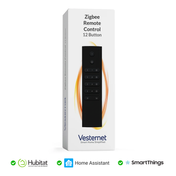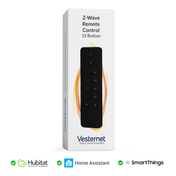
Why have a Smoke Alarm
This may seem an obvious statement and not many people will argue about having early warning about smoke. One of the easiest and most effective ways to protect your home and family is to install a smoke alarm and Carbon Monoxide (CO) alarm.
The basic fact is, that in the case of a fire, more people die due to smoke than the actual fire. Fires kill, but smoke kills faster. A simple smoke alarm will give you a fighting chance. The other killer that can come into our homes is Carbon Monoxide - this invisible gas is probably more dangerous than smoke as you won't notice it's there until it's too late. Unless you have a Carbon Monoxide Sensor.
This guide will help you understand what's available, the important features to consider and how to best protect your home.
Things you should know about Smoke Alarms
The main focus of this guide is smoke alarms, but we will also cover Carbon Monoxide as they also protect your home.
Smoke Alarms
Firstly, not all Smoke alarms are created equal. There are differences between how they detect smoke, the types of smoke they can detect and what standards they meet. We'll take a look at all of these points.
Types of Smoke Alarms
There are two basic types of smoke alarm - Ionisation and Optical.
-
Ionisation
Ionisation alarms use a small chamber to detect smoke. They are best at detecting fast burning (flaming) fires, but are not good at detecting thick smoke. Ionisation smoke sensors are prone to accidental triggering, which becomes incredibly irritating and annoying, resulting in many people getting fed up and removing the batteries. These alarms are the bottom end of the market, they are cheap but cheap for a reason - they also give smoke alarms a bad name for being annoying. We don't recommend Ionisation alarms and don't sell them. -
Optical
Optical based alarms use a tiny laser to detect smoke. Most optical alarms use a single laser that is very good at detecting larger smoke particles given off by slow burning, smouldering fires. They are slower to react to flaming fires that give off smaller particles. These alarms are not prone to accidental triggering and are a much better option. -
Optical - Dual Spectrum
The Dual Spectrum Optical sensors are the best option. They use two lasers - one that can see large particles and the other to detect small particles. They are good at detecting fast burning fires as well as slow smouldering fire with thick smoke. These are the most expensive, but are the best option, with no compromise - and they do not trigger accidentally!
Carbon Monoxide (CO)
Carbon Monoxide is a tasteless, odourless and invisible gas that can be given off by any fuel burning appliance such as a boiler (oil or gas) or a wood burning stove. Carbon Monoxide can slowly build up in the home without being detected - symptoms are similar to a flu, steadily getting worse. In the worst cases it can cause unconsciousness or death.
A Carbon Monoxide alarm will detect this gas before it has increased to a dangerous level. You can then fix the underlying cause, long before it becomes a real danger to your family.
Certification
It's important to select a smoke alarm that is certified to European safety standards. Look out for ones that meet the EN14604 requirements.
Smart Alarms
All our Smoke and CO alarms are wireless, meaning you don't need to install wires to allow them to communicate with each other. They are all Smart, which means they can do much more than detect smoke or CO. Some will work as standalone units, sounding a siren and sending text alerts to you when danger is detected. Others work with other systems or within a Z-Wave home automation system to be an integrated part of a smart home system.
Building Regulations
Selecting and fitting a Smoke or Carbon Monoxide alarm can be incredibly easy - the battery versions can be installed in seconds. You may need to think a little further when installing them into a newly built or extended building as you then need to comply with UK Building Regulations.
New Builds
If you are fitting a smoke alarm system into a newly built house, or a major extension, then you will need to select and install the smoke alarm in accordance with the UK Building Regulations. Below are the main things you need to know (with references to the Building Regulations 2013).
-
Must be Mains-powered
All Smoke Alarms must be mains-powered from either a dedicated circuit or a lighting circuit. Regulation 1.19 (2013). -
Must be Interlinked
All Smoke Alarms most be interlinked, so that if one is triggered it will trigger all the others. This allows them to act as a single group alerting you in all parts of the house. This interlink can be wired or wireless (there is no distinction). Regulations 1.14 and 1.21 (2013).. -
Kitchen Sensors
There appears to be some confusion about this stipulation. From our understanding you can use an Optical Smoke alarm in a kitchen, so long as the kitchen has a door and the smoke alarm is interlinked to the other smoke alarms in the house. However, from our experience, optical alarms (not matter how good), will always give false alarms when detecting steam or 'smoke' from cooking. For this reason, it is best to use a Heat Sensor in the kitchen - these only detect large rises in heat/temperature and do not suffer from false alarms.
We have based these recommendation on the current regulations and made them available for download - Building Regulations (2013 update). For a new installation you should consult with your electrician and/or local authority in case they have different requirements.
Existing Properties
There are no formal regulations to meet when installing Smoke Alarms in an existing property. Any smoke alarm is better than nothing. But it is worth considering the Building Regulations as best practise and help choose the best Smoke Alarm for your needs (as well as this guide).
Vesternet Recommended Smoke Alarms
We have a large range of Smoke Alarms and CO alarms suitable for standalone use or integrating into a Smart Home system using Z-Wave, Zigbee or WiFi technologies.
Z-Wave
If your Smart Home Controller supports Z-Wave technology, check our our range of Z-Wave Smoke, CO and Air Quality Sensors.
Zigbee
If your Smart Home Controller supports Zigbee technology, check our our range of Zigbee Smoke, CO and Air Quality Sensors.
WiFi
If your Smart Home Controller supports devices that use WiFi technology, check our our range of WiFi Smoke, CO and Air Quality Sensors.
Confused as to which device to choose?
Check out our Choosing Smart Home Sensors guide!
This guide will hopefully help you select the most suitable Smoke or Carbon Monoxide alarm for your home. If you have any comments please let us know - feedback@vesternet.com









